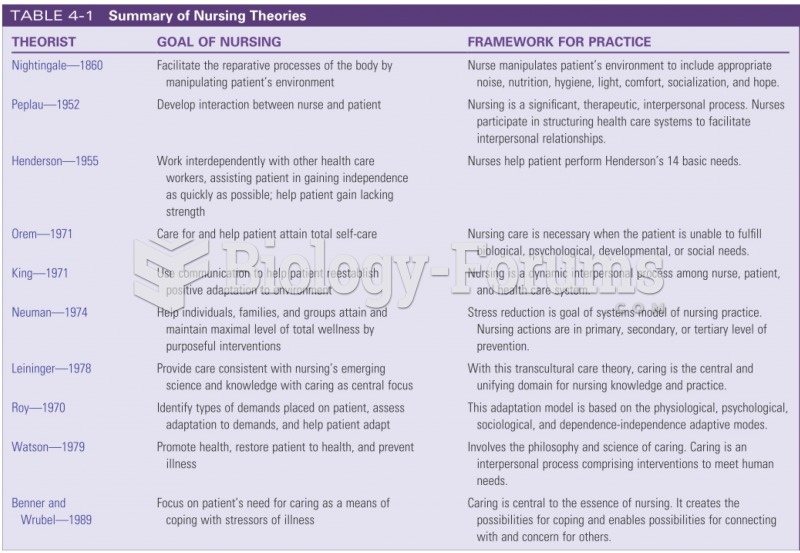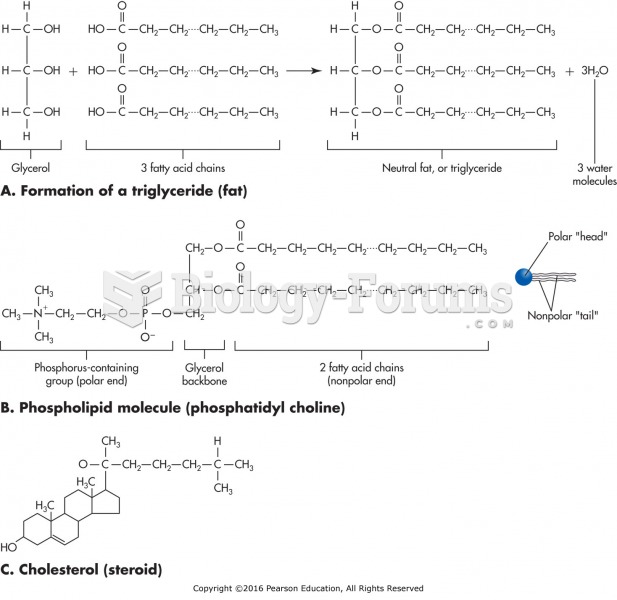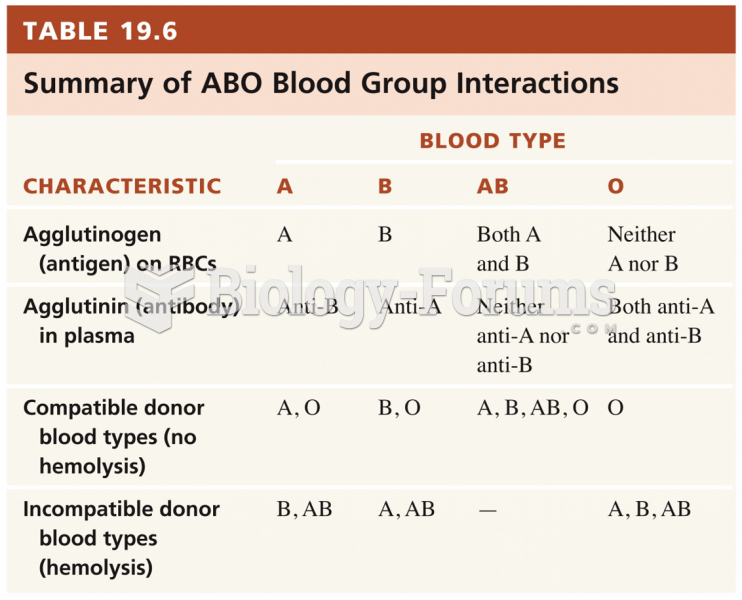Answer to Question 1
Correct Answer: 1,2,3
Rationale 1: Triglycerides are the most common classifications of lipids.
Rationale 2: Phospholipids are a class of lipids essential to building plasma membranes.
Rationale 3: Steroids are a diverse classification of lipids.
Rationale 4: Lecithins are not a classification of lipids. Lecithin is the best-known phospholipid.
Rationale 5: Bile acids are not a classification of lipids. Cholesterol is a building block of bile acids.
Global Rationale: Triglycerides are the most common classifications of lipids. Phospholipids are a class of lipids essential to building plasma membranes. Steriods are a diverse classification of lipids. Lecithins are not a classification of lipids. Lecithin is the best-known phospholipid. Bile acids are not a classification of lipids. Cholesterol is a building block of bile acids.
Answer to Question 2
Correct Answer: 1
Rationale 1: Apoproteins are specific for cholesterol, triglycerides, and phospholipids, and they act as carrier molecules for transporting these lipids through the blood.
Rationale 2: Lipid molecules are not soluble in plasma and so require protein binding for transport.
Rationale 3: Albumin is the most common plasma protein, but it is not specific as a carrier for cholesterol, triglycerides, and phospholipids.
Rationale 4: Lipoprotein molecules that combine lipids with a carrier protein contain different amounts of cholesterol, triglycerides, and phospholipids.
Global Rationale: Apoproteins are specific for cholesterol, triglycerides, and phospholipids, and they act as carrier molecules for transporting these lipids through the blood. Lipid molecules are not soluble in plasma and so require protein binding for transport. Albumin is the most common plasma protein, but it is not specific as a carrier for cholesterol, triglycerides, and phospholipids. Lipoprotein molecules that combine lipids with a carrier protein contain different amounts of cholesterol, triglycerides, and phospholipids.







